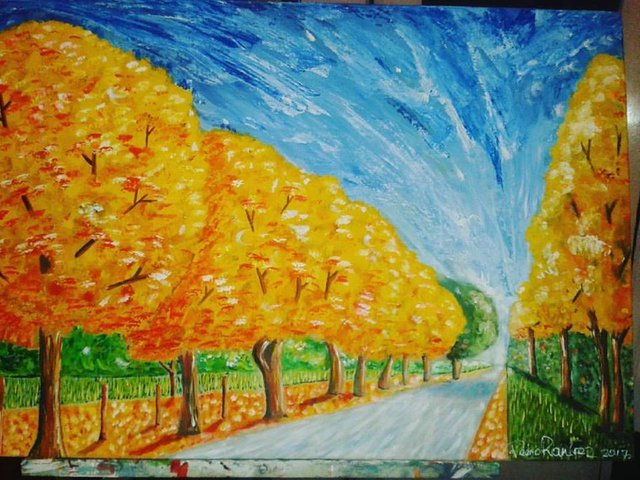Mi Araguaney

This impressive plant of the Bignoneaceae family has been decreed as the emblematic tree of Venezuela. The name is of indigenous origin (Caribbean) and describes several species of the genus Tabebuia, of which chrisantha is the emblem species.
It is a tree of medium size, whose trunk can grow straight or crooked, in forests of dry environments, on edges of savannas, valleys or arid hills, up to 1,200 meters. It is distinguished by a massive flowering, which appears bright after throwing its leaves by drought.
It is a hardwood tree, compact, of specific weight between 1.25 and 1.50. It is among the hardest of the American tropics, because if a piece is thrown into the water, it sinks like a rock. It has been used for posts and also as sleepers for railway rails.
Its flowering is massive and lasts several days. All the individuals of the area bloom synchronized, about four days after one of the few rains that surprise us in the middle of the drought. The massive flowering is very attractive for the different bees that pollinate them and for the tucusitos and other birds that steal the nectar.
Esta impresionante planta de la familia de las Bignoneáceas, ha sido decretada como el árbol emblemático de Venezuela. El nombre es de origen indígena (Caribe) y describe a varias especies del Género Tabebuia, del cual chrisantha es la especie emblema.
Es un árbol de mediano tamaño, cuyo tronco puede crecer derecho o torcido, en bosques de ambientes secos, en bordes de sabanas, valles o lomas áridas, hasta alturas de 1.200 metros. Se distingue por una floración masiva, que se presenta fulgurante luego de botar sus hojas por la sequía.
Es un árbol de madera dura, compacta, de peso específico entre 1,25 y 1,50. Está entre las más duras del trópico americano, ya que si se lanza al agua un pedazo, éste se hunde como una roca. Se ha usado para postes y también como durmientes para los rieles de los ferrocarriles.
Su floración es masiva y dura varios días. Todos los individuos del área florecen sincronizadamente, unos cuatro días después de una de las escasas lluvias que nos sorprenden en medio de la sequía. La floración masiva es muy atractiva para las distintas abejas que las polinizan y para los tucusitos y otros pájaros que le roban el néctar.